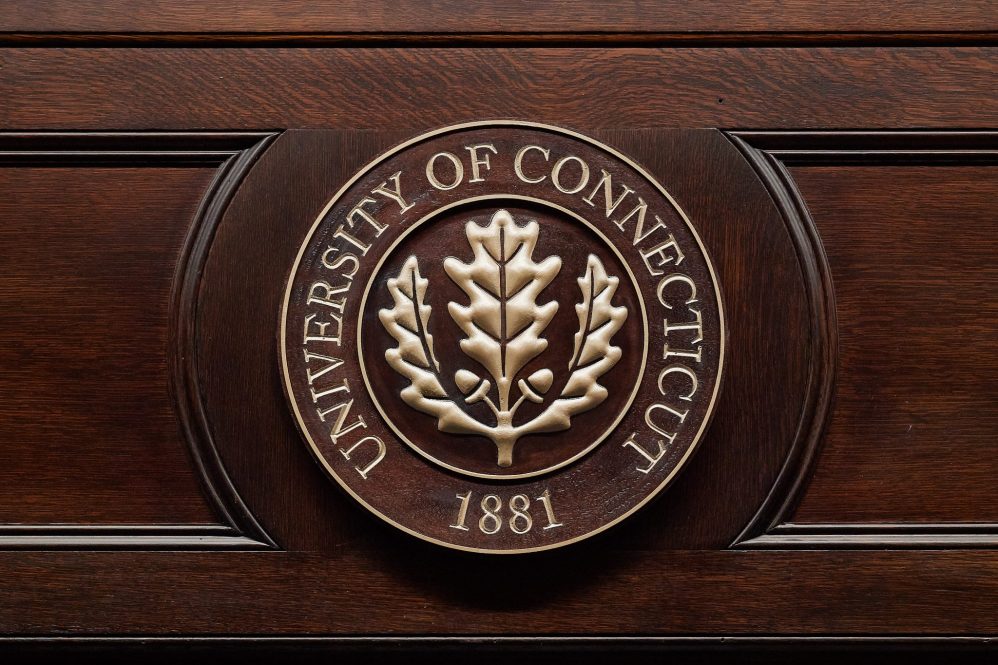UConn Health's success in generating new revenue was one of several areas in the University's new fiscal year 2025 budgets that underscore its work to carefully steward its resources

(Peter Morenus/UConn Photo)
UConn Health expects to generate more than $1 billion in patient care revenue from its hospital and clinical operations in the coming fiscal year, the first time it will cross that major threshold and a 133% revenue increase over just the past 10 years.
The figures, which are part of the 2024-25 University budgets that the Board of Trustees adopted Wednesday, reflect a full rebound - and then some - from the unavoidable decline that UConn Health experienced when it had to curtail many non-urgent business operations during the COVID pandemic.
It also illustrates the increasing volume of patients choosing UConn John Dempsey Hospital, its pharmacy operations, UConn Health's physician practices, and related services amid the competitive healthcare landscape.
"The success that we're seeing in terms of the net patient revenue, the volume of patients coming in, and being able to attract and retain workers is due to a team that truly deserves many kudos," says Andrew Agwunobi, UConn Health's chief executive officer and UConn's executive vice president for health affairs.
He said that the focus on providing high-quality patient care and award-winning patient experience, and employing exceptional physicians, nurses, and other professionals has been paying off, both in terms of higher revenues and the enterprise's strong reputation in the healthcare field.
The new figures also come as UConn has requested the state's permission to add 23 more medical surgical beds at John Dempsey Hospital due to high demand. If approved by the state's Office of Health Strategy, the new beds would come in addition to its current 234 licensed and staffed beds, which include 175 medical surgical beds.
UConn Health's success in generating new revenue was one of several areas in the University's new fiscal year 2025 budgets that underscore its work to carefully steward its resources and serve the community, its students, and stakeholders.
The Board of Trustees adopted the budgets Wednesday for UConn Storrs, the regional campuses, and UConn Health after they were similarly endorsed Tuesday by the board's Financial Affairs committee. The plans go into effect July 1 and run through June 30, 2025.
As part of the new budgets, UConn also will significantly increase its institutionally funded financial aid in the coming fiscal year, continuing its longtime commitment to helping students from all backgrounds access the life-changing benefits of a UConn education.
UConn's commitment to affordability is among many factors that have continued to attract record numbers of applicants, with the number surpassing 50,000 for the first time for the incoming Class of 2028.
All told, UConn is on track to have approximately 24,800 undergraduates across all of its campuses this fall - including about 4,500 first-year students among the 19,800 undergraduates at Storrs. Deposits from prospective students reached notably high rates this spring, both at the Storrs flagship campus and at the regional sites, especially UConn Stamford.
The total amount allocated in the new budget for students' financial aid will increase from $283.1 million in FY24 to $306.6 million in the coming fiscal year. Of that, the institutionally funded amount that comes as a portion of tuition revenue will increase from $181.2 million to $198.4 million.
The rest comes from federal sources such as the Pell Grant, state programs, scholarships funded by specific departments, and scholarships from private sources such as donor endowments.
In fact, almost three-quarters of UConn's students receive financial aid in the form of grants and scholarships that they don't need to repay.
The budgets represent a complex balancing act in which UConn has been working to protect and grow its academic and research enterprise, while also developing a road map to long-term financial sustainability through internal belt-tightening and seeking new areas of revenue in addition to tuition, state aid, and other sources.
"This budget will be the base as we continue to follow the priorities of our Strategic Plan and develop a road map for the next five to 10 years, along with what the out-years will look like," Jeffrey Geoghegan, UConn's chief financial officer and executive vice president for finance, told the board's financial affairs committee this week.
Overall, the FY25 operating budgets comprise $1.68 billion for UConn Storrs and regional campuses, and $1.65 billion for UConn Health's clinical, research, and academic operations.
State support accounts for 16% of total revenues at UConn and UConn Health combined, with clinical care revenue representing the largest area of income at 33%, and tuition and fees representing 28%. The remaining revenue comes from grants and contracts, auxiliary enterprises, and other sources.
For FY25, UConn expects to balance the budget for the Storrs and regional campuses with some prior year funds, expense reductions, and additional one-time federal funds being allocated by the state to its public higher education institutions.






